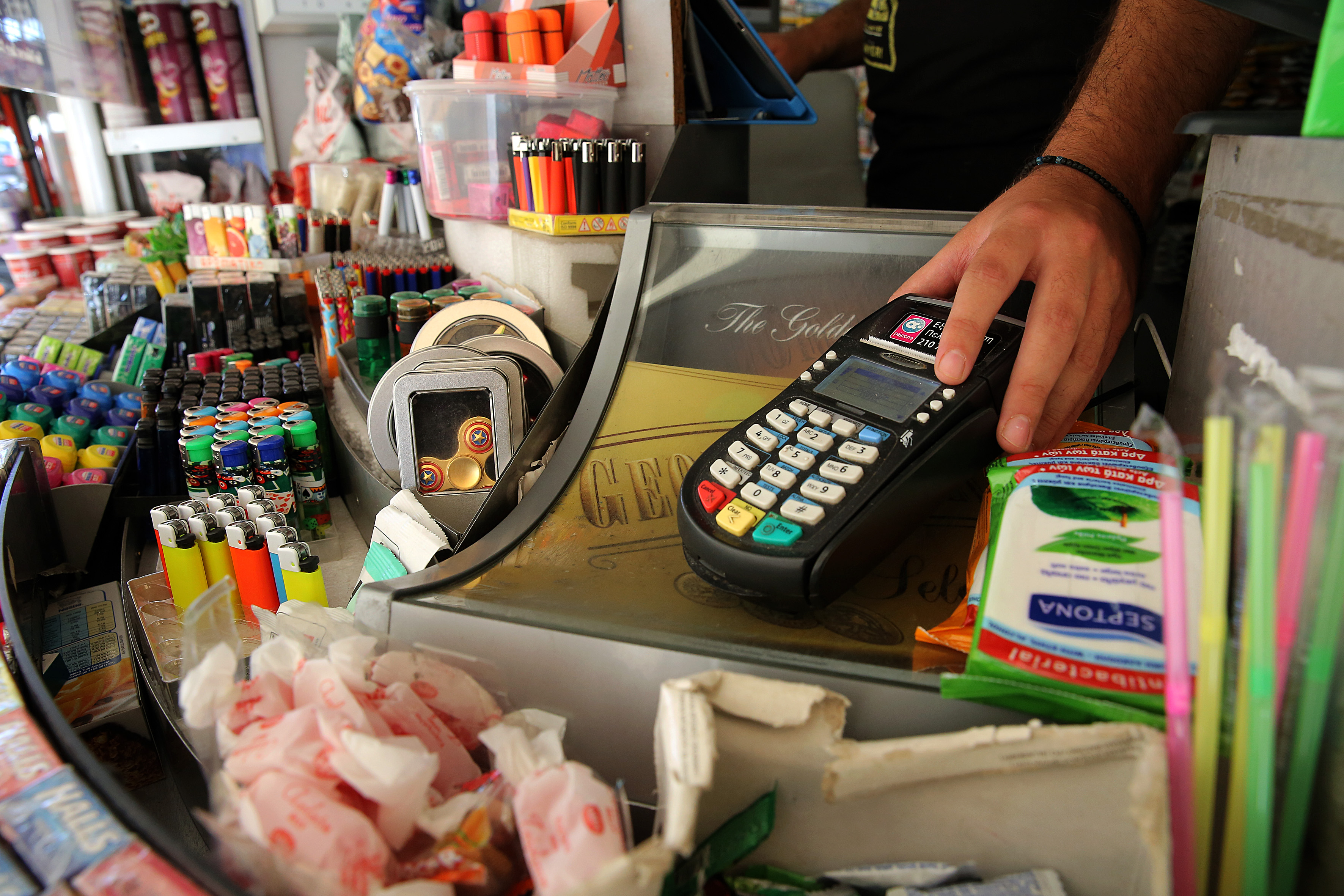Nearly 90 percent of purchases in Greece are carried out with cash, according to a European Central Bank study authored by Henk Esselink and Lola Hernandez, in what is touted as the first survey of its kind in the Eurozone.
“The aim of this study is to shed light on consumers’ payment behaviour and in particular to improve the understanding of consumers’ payment choices at POS, based on a large sample of countries,” the report says, going on to offer data by country:
In terms of value, the share of cash was highest in Greece, Cyprus and Malta (above 70%), while it was lowest in the Benelux countries, Estonia, France and Finland (at, or below, 33%).
A whopping 88 percent of purchases in Greece were completed in cash, second only to Malta, with 92 percent cash purchases.
In terms of value of payments made at POS (points of sale), in all countries the share of cash was much lower than in terms of number of payments.
In Cyprus, Malta and Greece the share of cash in value of payments was the highest, ranging from 72% to 75%
Italy, Spain and Greece were the countries where consumers made the highest number of cash payments per day, with 1.7 transactions per day, i.e. nearly 12 per week.
The share of cash payments above €100 in the total value of cash payments at the POS was wide-ranging, from 3% in France or 5% in Belgium, to 21% in Ireland and Slovenia or 26% in Greece.
On average, in the euro area (excluding Germany23) 6% of the rent was said to be paid in cash, with 26% of all rent in Greece said to be paid in cash.
56% of the respondents in Greece and nearly 25% of those in Italy said they paid their electricity bill in cash.
In Austria (19%) and Greece (18%) a relatively large proportion of consumers put more than €1,000 aside in cash, however the overall share of those who stored cash was not among the highest.
Despite the banking crisis in Greece, as a result of which cash withdrawals increased significantly, on average only 22% of Greek respondents said that they kept cash as a precautionary reserve.
Overall,the survey results show that in 2016 cash was the dominant payment instrument at POS.
In terms of number, 79% of all transactions were carried out using cash, amounting to 54% of the total value of all payments.
Cards were the second most frequently used payment instrument at POS – 19% of all transactions were settled using a payment card.
In terms of value, this amounts to 39% of the total value paid at POS. The use of cash and cards differs according to country, place of purchase,



